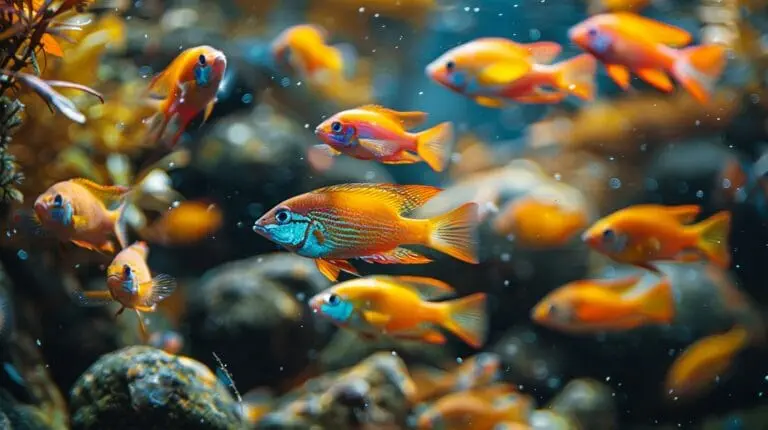When we think about interacting with Mata Mata turtles, it’s important to understand the risks associated with their powerful bite. These turtles have a unique jaw structure that allows them to deliver forceful snaps, which can pose significant dangers to us.
If we ever find ourselves on the receiving end of a Mata Mata turtle’s bite, knowing the proper first aid steps is vital. From cleaning the wound to recognizing signs of infection, there are several important measures we need to take. Additionally, seeking medical attention as soon as possible is crucial, as the bite of a Mata Mata turtle can cause serious harm. Understanding the behavior and habits of this fascinating freshwater fish species can also help us avoid dangerous encounters in the future. The more we know about these creatures, the better prepared we can be to coexist with them in their natural habitats.
So, how can we effectively handle a bite and guarantee our safety around these fascinating creatures? Let’s explore the steps together.
Key Takeaways
- Mata Mata turtles have a powerful bite due to their unique jaw structure and sudden vacuum mechanism.
- Clean and cover the wound immediately, then seek medical attention for deep bites or signs of infection.
- Always use both hands to support the turtle’s body during handling to reduce stress and prevent bites.
- Wearing gloves and following proper handling guidelines can offer added protection against bites.
- Educate children on the importance of gentle handling and supervise their interactions with the turtle.
Understanding the Mata Mata Turtle: Facts and Fascinating Insights
The Mata Mata Turtle, primarily found in the slow-moving rivers and swampy areas of the Amazon and Orinoco basins, thrives in environments that offer plenty of camouflage. With their leaf-like shells and elongated necks that mimic fallen branches, these turtles have perfected the art of blending into their surroundings.
Unlike many other turtles, Mata Mata Turtles do not actively pursue prey. Instead, they lie in wait, using their camouflaged appearance to ambush unsuspecting fish. When the time is right, they open their mouth wide, creating a vacuum that sucks in their prey.
When handling these turtles, caution is key. Although generally docile, Mata Mata Turtles can deliver a powerful bite if they feel threatened. Minimal handling is best to avoid stressing them and to ensure our safety.
The Mata Mata Turtle’s Interaction with Humans and the Environment
Mata Mata Turtles maintain a delicate balance within their natural habitats. Their unique features and role in the ecosystem have garnered attention and appreciation. By controlling the population of certain aquatic species, they ensure ecological balance, contributing to the biodiversity that we cherish.
| Aspect | Emotional Impact |
|---|---|
| Unique Features | Awe at nature’s creativity |
| Found on the Island | Connection to pristine, remote places |
| Prey to Cross | Fascination with their hunting strategy |
| Ecological Balance | Gratitude for their role in nature |
| Human Encounters | Excitement and curiosity |
When we encounter Mata Mata Turtles, it’s a reminder of the freedom and beauty of the wild. Their presence teaches us to appreciate the intricate connections in nature. It’s crucial to respect these creatures and their habitats to preserve the freedom we desire for ourselves and the natural world.
The Anatomy of a Mata Mata Turtle Bite
The Mata Mata turtle’s jaw is uniquely structured for quick, powerful snaps, making it a formidable predator. Its bite mechanism relies on a sudden vacuum created by the rapid opening of its wide mouth, allowing it to engulf prey almost instantaneously.
Though their primary diet consists of fish and invertebrates, the strength of their bite poses potential risks to humans. If threatened or mishandled, a Mata Mata turtle can deliver a bite that can cause serious injury. The risks associated with a Mata Mata turtle bite aren’t just about the immediate pain but also potential infections. Given the aquatic environment these turtles live in, their mouths can harbor harmful bacteria.
Responding to a Mata Mata Turtle Bite: First Aid and Medical Care

When responding to a bite, the first step is to remain calm. Rinse the wound immediately with clean water to remove any dirt or saliva. Next, gently clean the area with mild soap and water, apply an antiseptic to reduce the risk of infection, and cover the wound with a clean, dry bandage.
If the bite is deep, bleeding heavily, or showing signs of infection like redness, swelling, or pus, medical attention is necessary. Additionally, symptoms like fever or severe pain could indicate complications that need professional care.
Prevention and Safety Measures: Avoiding a Mata Mata Turtle Bite
By following proper handling techniques, we can minimize risks and ensure both our safety and the turtle’s well-being. Always approach the turtle calmly and avoid sudden movements. Using both hands to support its body will help prevent stress-induced bites.
Wearing gloves can provide an extra layer of safety, shielding our hands from potential bites. It’s also crucial to supervise children around these turtles and educate them about the importance of gentle handling.
Keeping the turtle in a secure, comfortable habitat reduces stress and the likelihood of defensive behavior. Regularly cleaning and maintaining the habitat ensures a healthier interaction space for both us and the turtle.
Here’s a quick visual guide:
| Handling Guidelines | Protective Measures | Environment |
|---|---|---|
| Approach calmly | Wear gloves | Secure habitat |
| Use both hands | Supervise children | Maintain cleanliness |
| Avoid sudden movements | Educate on gentle touch | Reduce stress factors |
Conclusion
To sum up, we’ve learned that understanding the Mata Mata turtle‘s behavior and anatomy is crucial to preventing and managing bites. By staying informed and using proper handling techniques, we can minimize risks and enjoy our interactions with these unique creatures. It’s also important to remember that the dinosaur bichir size is much smaller in comparison to the Mata Mata turtle, so handling techniques should be adjusted accordingly. It’s best to avoid putting hands or fingers near the turtle’s mouth, and always approach with caution. With these precautions in mind, we can safely appreciate and care for these fascinating reptiles.
Remember, if a bite occurs, stay calm, clean the wound, apply antiseptic, and seek medical attention if needed.
Let’s prioritize safety to guarantee a positive experience with Mata Mata turtles.
Frequently Asked Questions
What is a Mata Mata turtle?
The Mata Mata turtle is a freshwater turtle species native to South America, known for its unique appearance and behavior.
How big can Mata Mata turtles grow?
Mata Mata turtles can grow quite large, with some specimens reaching up to 18 inches in diameter.
What do Mata Mata turtles eat?
The Mata Mata turtle is carnivorous and feeds on fish, insects, and other small aquatic creatures.
Can Mata Mata turtles be kept as pets?
Yes, Mata Mata turtles are sometimes kept as pets, but their large size and specialized care requirements make them better suited for experienced reptile owners.
How do Mata Mata turtles catch their prey?
Mata Mata turtles are known for their unique feeding behavior called suction feeding, where they use their large mouth to create a vacuum to suck in their prey.





